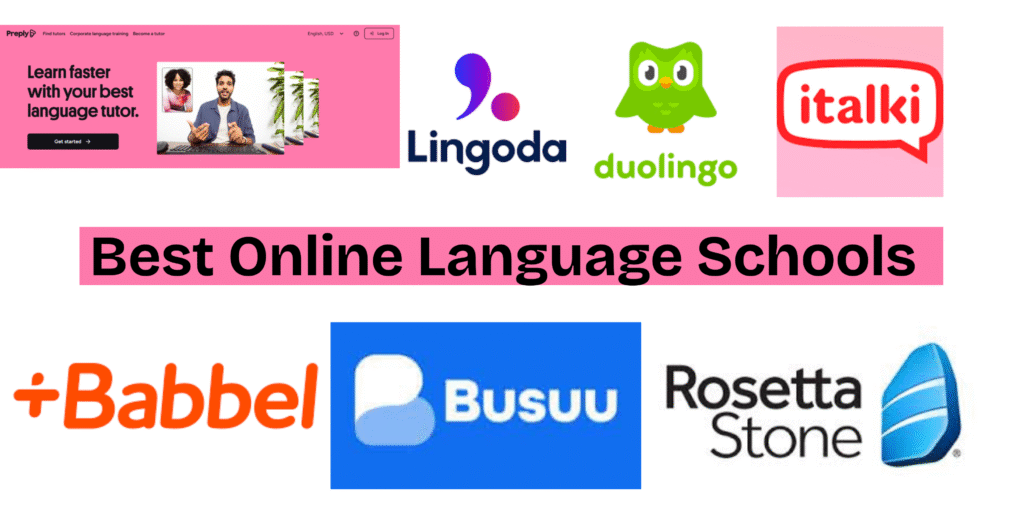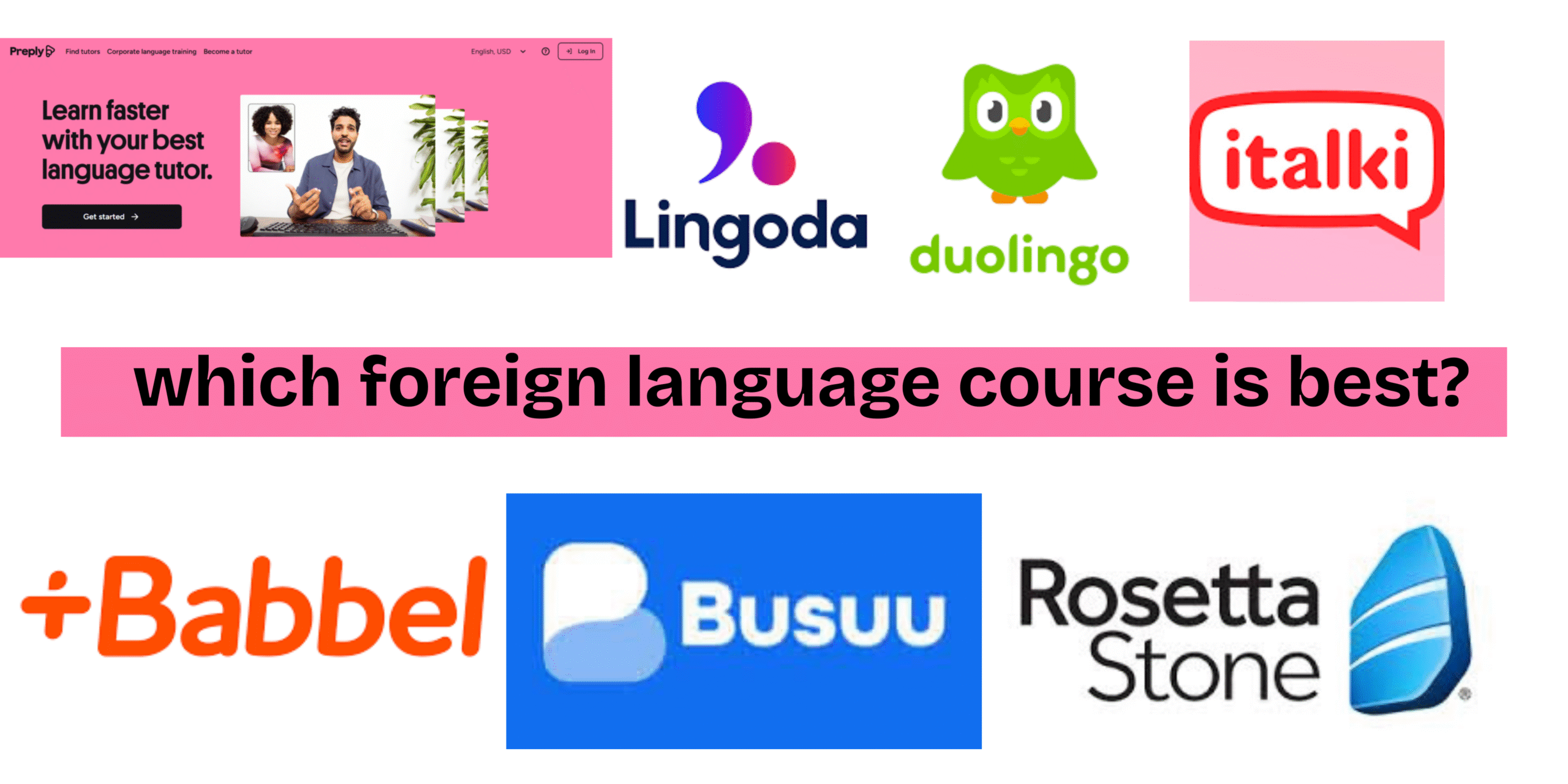Which Foreign Language Course Is Best? The Complete Guide
Learning a new language can open many doors. speaking another language is a valuable skill to travel, improve your job prospects, or simply connect with more people. But with so many courses online, many people ask: Which foreign language course is best?
This guide will help you make the right choice. We’ll explain what to look for, compare the best options, and help you pick the course that fits your goals and lifestyle.
Why Learning a Foreign Language Matters
Language skills can change your life. Here’s why:
- Better career opportunities: Many companies hire people who speak more than one language.
- Easier travel: You can talk to locals and navigate new countries with ease.
- More cultural connection: Understand new traditions, music, food, and people.
- Sharper mind: Studies show language learners improve memory and problem-solving skills.
Now that you know the benefits, let’s explore how to choose the best course.
What Makes a Language Course the Best?
A great language course should:
- Teach real-world communication, not just grammar drills.
- Fit your schedule with flexible learning options.
- Use clear, proven methods for long-term retention.
- Offer speaking practice to improve fluency.
- Be affordable, especially if you’re learning long-term.
Not every course suits every learner. The best one depends on your goal, learning style, and budget.
Top 5 Foreign Language Courses (Ranked and Reviewed)
1. Rosetta Stone
Best for: Immersive learning and strong foundation.
Rosetta Stone uses an immersive method. You’ll learn the language the way children do—by connecting images with words and phrases.
- Languages: Spanish, French, German, Italian, Japanese, and more.
- Pros: No English translations, strong audio-visual method, voice recognition easy to read and understand.
- Cons: Limited grammar explanations, not ideal for fast learners.
- Price: Paid plans only, with lifetime access available.
- Ideal for: Beginners who want a deep, structured start.
Visit: Rosetta Stone
2. Babbel
Best for: Quick, practical conversations.
Babbel is perfect for busy learners. Its lessons focus on phrases used in real-life situations, like ordering food or making introductions.
- Languages: 14 languages including Spanish, French, and German.
- Pros: Short, 10–15 minute lessons; built-in review system.
- Cons: Less effective for advanced speakers.
- Price: Subscription-based with monthly and annual plans.
- Ideal for: Travelers, beginners, and people with limited time.
Try Babbel: Babbel
3. Duolingo
Best for: Fun, free, bite-sized learning.
Duolingo is one of the most popular free language apps. Duolingo uses well structured lessons that keep you motivated with daily goals.
- Languages: Over 30, including Spanish, French, German, Japanese, Arabic, and Korean.
- Pros: 100% free option, easy to use, ideal for casual learners.
- Cons: Limited speaking and writing practice.
- Price: Free with ads; paid version removes ads and offers extra features.
- Ideal for: Beginners, students, and people on a budget.
Start learning: Duolingo
4. italki
Best for: Real conversation with native speakers.
italki connects you with real language tutors for private online lessons. You can choose teachers based on price, experience, and schedule.
- Languages: Over 100 languages.
- Pros: 1-on-1 live lessons, wide variety of tutors and styles.
- Cons: Requires commitment and scheduling.
- Price: Varies by tutor, starting from $5 per lesson.
- Ideal for: Serious learners who want to improve speaking fast.
Book a tutor: italki
5. Preply
Best for: Personalized lessons at your pace.
Preply lets you find private tutors who match your goals, whether you’re learning a language for travel, work, or test prep.
- Languages: Many, including English, Spanish, French, and Chinese.
- Pros: Live lessons, flexible scheduling, tailored learning plans.
- Cons: No structured course material; depends on tutor quality.
- Price: Starts at $5–$15 per hour.
- Ideal for: Learners who want custom learning paths.

Start here: Preply
Which Foreign Language Course Is Best for You?
Here’s a clear breakdown based on your learning goals:
- learn basic conversation:
- Choose Babbel or Duolingo
- speak like a native:
- Use italki or Preply
- understand grammar and sentence structure:
- Go with Rosetta Stone or Babbel
- free and fun lessons:
- Pick Duolingo
- custom lessons and live practice:
- Choose italki or Preply
Choosing the right course depends on how you like to learn. If you enjoy self-study, apps like Babbel and Duolingo work well. If you prefer speaking with people, platforms like italki and Preply offer real-time practice.
Tips for Choosing the Best Course
- Know your goal – Are you learning for travel, work, school, or personal growth?
- Try before you commit – Many platforms offer free trials or sample lessons.
- Pick a method that works for you – Some people like videos and reading, others learn better through conversation.
- Stick to a routine – Learning a language takes time. Daily practice matters more than long study sessions once a week.
Final Thoughts
So, which foreign language course is best?
strong foundation, go with Rosetta Stone.
If you’re short on time and want practical phrases, use Babbel.
For fun and free learning, try Duolingo.
speak confidently with native speakers, choose italki or Preply.
Each course offers something different. Your best choice depends on what you want and how you like to learn. Use this guide to compare your options and start learning a new language today.

Leave a Reply